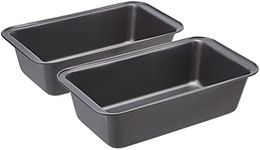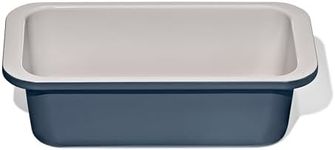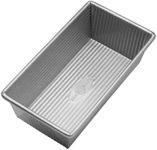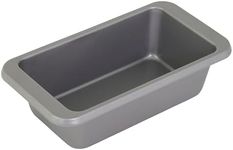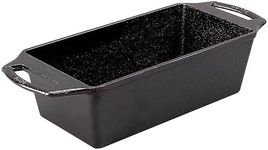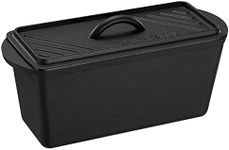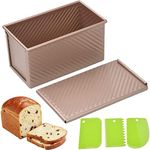Buying Guide for the Best Bread Pans
Choosing the right bread pan can significantly impact the quality of your baked goods. Whether you're a novice baker or an experienced one, understanding the key specifications of bread pans will help you make an informed decision. The right bread pan will ensure even baking, proper crust formation, and ease of use. Here are some important factors to consider when selecting a bread pan.MaterialBread pans come in various materials such as aluminum, stainless steel, glass, and silicone. The material affects heat distribution and the final texture of your bread. Aluminum pans are known for their excellent heat conductivity, resulting in evenly baked bread. Stainless steel is durable and resistant to rust, but it may not conduct heat as well as aluminum. Glass pans allow you to see the browning process, but they can be heavy and may require adjustments in baking time. Silicone pans are flexible and non-stick, making them easy to clean, but they may not provide the same crust as metal pans. Choose a material based on your baking preferences and how you like your bread crust.
SizeBread pans come in various sizes, typically ranging from small (8x4 inches) to large (9x5 inches). The size of the pan will determine the shape and size of your loaf. Smaller pans are ideal for smaller batches or recipes, while larger pans are suitable for bigger loaves or family-sized portions. Consider the size of your oven and the quantity of bread you usually bake when selecting the size of your bread pan.
ShapeBread pans can be rectangular, square, or even round. The shape of the pan will affect the final appearance of your bread. Rectangular pans are the most common and are ideal for traditional loaves. Square pans can be used for specialty breads or cakes, while round pans are great for artisan-style loaves. Choose a shape based on the type of bread you plan to bake and your aesthetic preferences.
Non-stick CoatingNon-stick coatings on bread pans can make the baking process easier by preventing the bread from sticking to the pan. This feature is particularly useful for novice bakers or those who prefer easy cleanup. However, non-stick coatings can wear off over time and may require careful handling to avoid scratches. If you prefer a non-stick pan, look for high-quality coatings that are durable and safe for baking.
HandlesSome bread pans come with handles, which can make it easier to remove the pan from the oven and handle it safely. Handles can be particularly useful if you bake frequently or if you have difficulty gripping hot pans. Consider whether handles are important to you based on your baking habits and comfort level.
DepthThe depth of the bread pan will affect the height of your loaf. Deeper pans can produce taller loaves, while shallower pans will result in shorter, wider loaves. Consider the type of bread you plan to bake and your preference for loaf height when choosing the depth of your bread pan.

